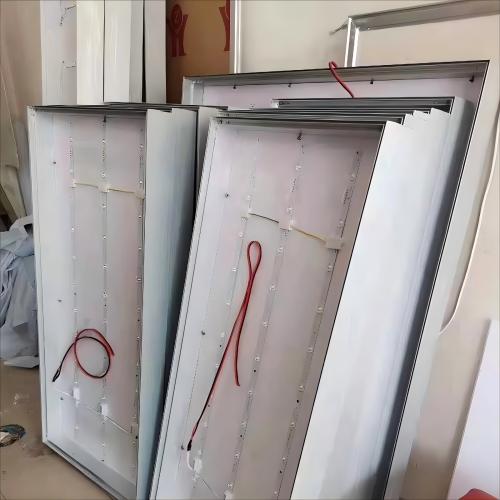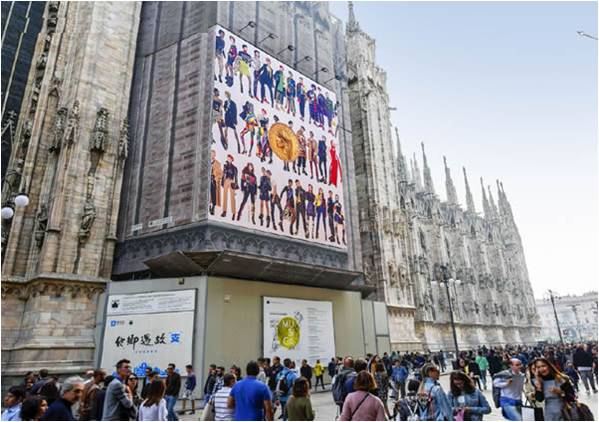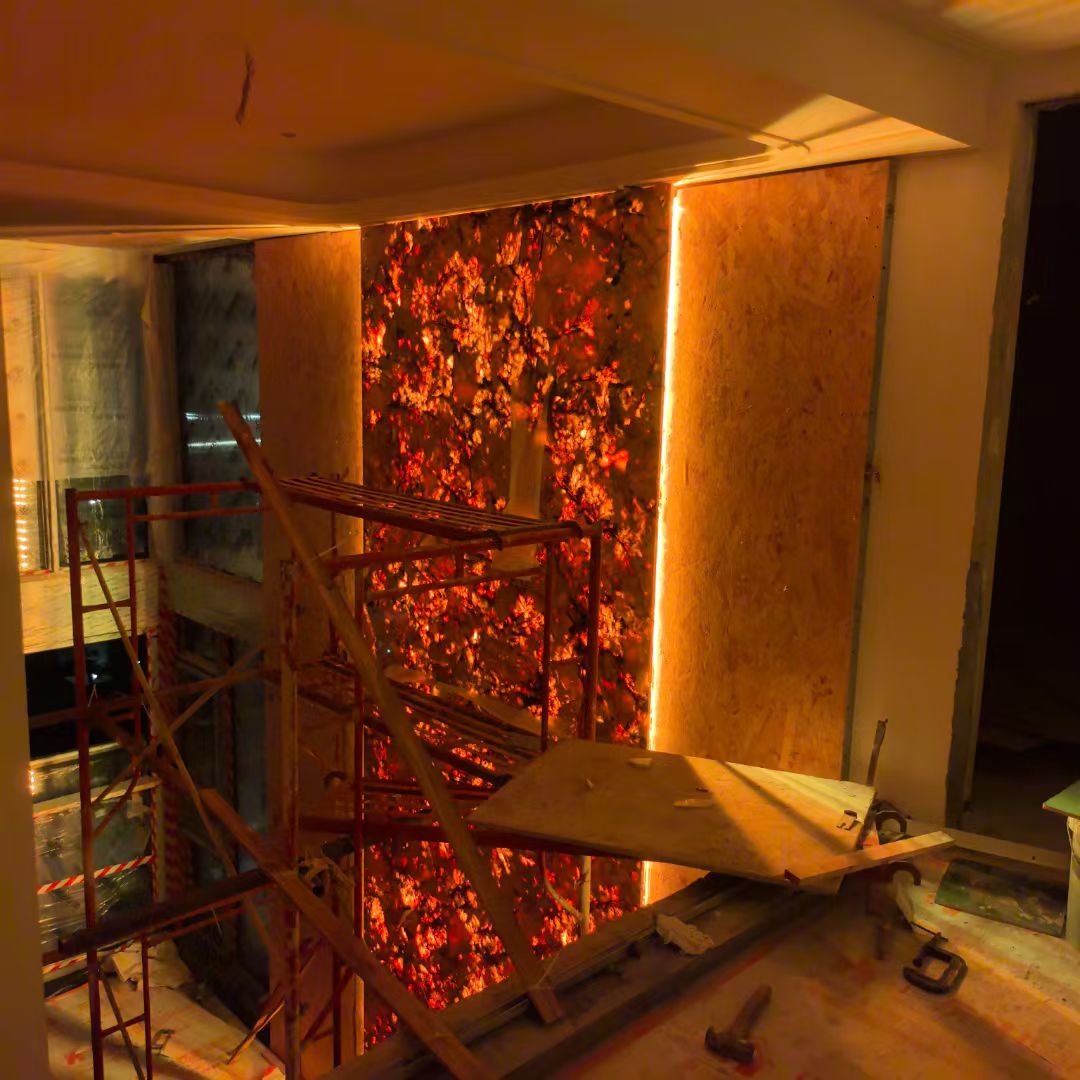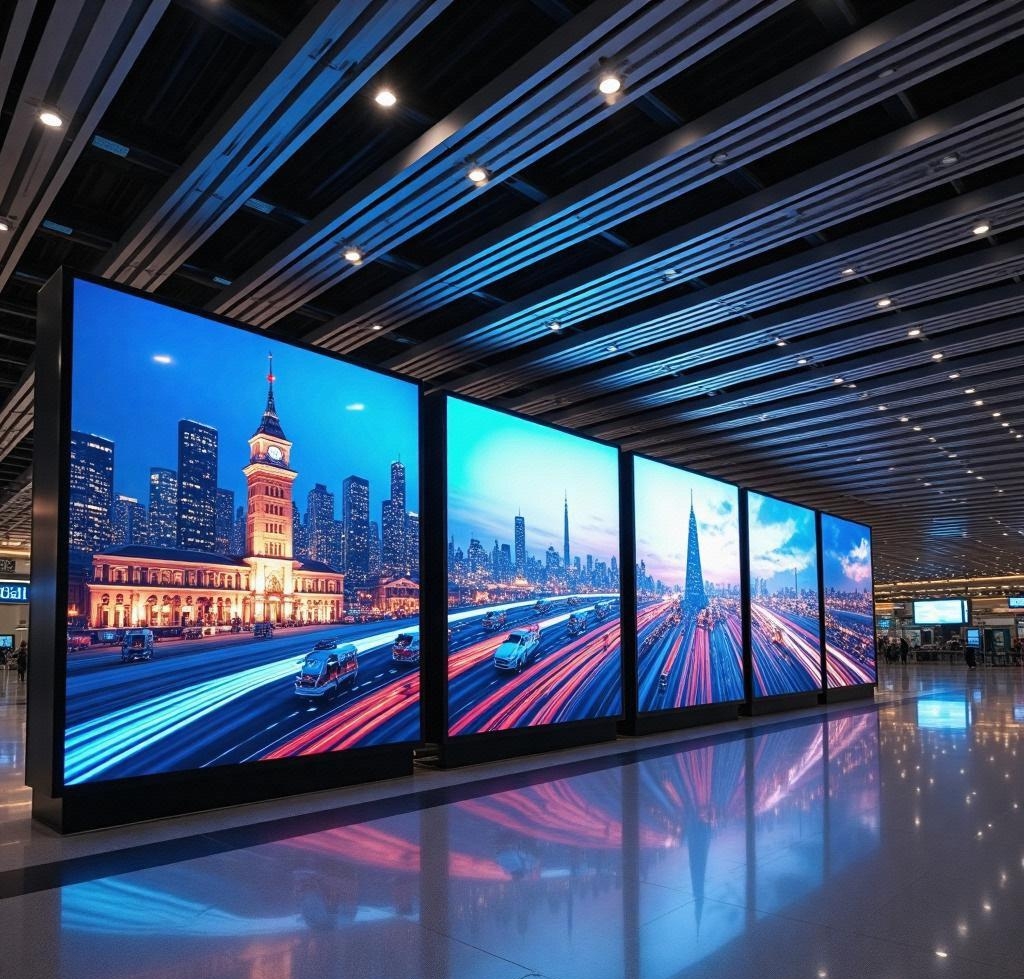How to choose LED ceiling lighting: A comprehensive guide to LED soft ceiling lighting solutions
How to choose LED ceiling lighting: A comprehensive guide to LED soft ceiling lighting solutions
Introduction: The Metamorphosis of Soft Ceilings
Introduced to China from Switzerland, soft ceilings have become a versatile lighting solution due to the material diversity of their composition and their adaptability to various scenarios. Whether serving as an arresting feature in commercial spaces or a understated centerpiece in residential design, these elements contribute to the unique charm of a space when integrated with diverse lighting fixtures.
However, the selection of appropriate lighting for a given scene remains a challenge. The question of how to balance the advantages and disadvantages of a given situation is a complex one. This guide meticulously delineates each step in the process.
Scenario 1: Commercial Spaces – A Dual Battleground for Attention and Atmosphere
Recommended Solution:
Lighting Combination 1: RGB Full-Color COB Light Strips + Metallic/Pearlescent Soft Film
Why light strips? Soft film ceilings require a uniform, non-granular surface light source. The point light from traditional downlights or spotlights creates noticeable light spots, disrupting the overall effect and softness of the soft film.
Why are COB light strips recommended? Compared to traditional SMD (Surface Mounted Device) LED light strips, COB light strips offer a more uniform, non-granular light source with excellent light spot continuity. They minimize the "rib pattern" caused by light bead shadows cast on the soft film, making them the preferred choice for high-quality soft film lighting.
Advantages: 1. Dynamic Visual Impact: RGB light strips possess the capability to modulate both the hue and the intensity of their light, thereby engendering an immersive experience for events such as holiday themes and product launches.
2. Material Variety: The metal surface reflects cool light, thereby imparting a technological feel, while the pearlescent surface engenders a dreamy atmosphere, rendering it ideal for luxury stores or art exhibitions. 3. Flexible Retrofitting: Programmable light strips facilitate the transition between various scene modes, thereby extending the longevity of the space.
Potential Issues: 1. High Cost: The integration of dynamic lighting fixtures and high-quality soft film necessitates a substantial initial investment, rendering it well-suited for commercial projects with sufficient financial resources.
2. Complex Maintenance: To ensure the integrity of the overall effect, it is imperative that light color and soft film cleaning be conducted by a professional team on a regular basis. Such measures are essential in preventing failures in the lamp from compromising the desired outcome.
Luminaire Combination 2: RGB Full-Color Blockchain Module + Metallic/Pearlescent Soft Film
Why choose a blockchain module? It can be freely combined and configured, making it suitable for complex ceiling structures (such as irregular or curved surfaces).
Advantages: 1. Programmable Control: Supports RGB or color temperature adjustment, enabling dynamic lighting scene switching (such as holiday mode or meeting mode) through the intelligent system.
2. High Color Rendering: Some high-end modules have a color rendering index (Ra) >90, faithfully reproducing object colors.
Lamp Combination 3: Low-Voltage RGB Full-Color Diffuse Roller Light Bar + Metallic/Pearlescent Soft Film
Why choose a diffuse roller light bar? Specially designed diffuse reflective structures (such as reflectors or diffusers) ensure even light distribution, eliminating noticeable shadows or glare. The light bar also offers low energy consumption (12W/m2) and a long lifespan (>50,000 hours).
These solutions are suitable for futuristic exhibition halls, shopping mall atriums, brand flagship stores, technology company offices, hotel banquet halls, theater stages, museum interactive exhibits, and artistic light shows.
Scenario 2: Home Space - A Gentle Touch of Understated Luxury
Recommended Solution: Lighting Combination 1: Pure White COB Light Strip + Translucent Soft Film
The color temperature range of 2700K-3500K is the most commonly used and warmest color temperature. The 4000K option is recommended for areas such as kitchens, bathrooms, and office spaces (studies).
Key Points: 1. Soft Film Transmittance: Soft film absorbs and diffuses light, which typically results in a 20%-30% loss of light. This factor must be considered when calculating power/luminous flux, as higher light output is required in comparison to direct lighting.
2. Light Strip Installation Density: The spacing between light strips (e.g., 5 cm, 10 cm) exerts a direct influence on brightness uniformity and overall brightness. Reducing the spacing between the LEDs results in higher and more uniform brightness, but also increases cost. The determination of the appropriate spacing is contingent upon the luminous flux of the light strip and the transmittance of the soft film.
3. Dimming: It is strongly recommended that COB light strips and drivers that support dimming be selected. This feature enables precise adjustment of brightness according to various criteria, such as the time of day, the nature of the activity, or the prevailing mood. It prevents both over-brightness and under-darkness, thereby enhancing both comfort and energy efficiency. The available options for dimming include 0-10V, DALI, or PWM.
Lighting Combination 2: Pre-embedded linear lights (such as silicone neon tubes or aluminum linear lights) + translucent soft film
Advantages: The implementation of designs has the capacity to yield artistic effects, including suspended and staggered lighting. Silicone is characterized by its high waterproof properties, which contribute to the uniformity of the lighting without introducing graininess.
Scenario 3: Office Space - Balancing Efficiency and Comfort
Recommended Solution:
Lighting Combination 1: 4000K Neutral Light COB Strips + Whale Skin Soft Film
Advantages: 1. Eye-friendly and Energy-Saving: Neutral light color temperature reduces visual fatigue and improves work efficiency.
2. Even Lighting: The whale skin soft film diffuses light, preventing screen glare, and paired with bidirectional batwing fixtures eliminates shadows.
3. Cost-Control: Standardized COB strips offer low procurement costs and are suitable for large office areas.
Luminaire Combination 2: Ultra-thin Magnetic COB Flat Panel Light (Flat Area) + Whale Skin Surface Soft Film
Parameters: Thickness 1.2cm (including diffuser), Power Density 35-45W/m2 (Illumination 300-400 LUX), Custom Soft Film Size 600*600mm/600*1200mm (Laminated to the original soft film).
Advantages: 1. Seamless Edge: Frame thickness <2mm, no step difference when joining with the soft film;
2. Anti-glare Structure: Microprismatic diffuser + honeycomb network, UGR <16;
3. Quick Maintenance: Magnetic structure allows for easy assembly and disassembly.
Scenario 4: Dining/Entertainment Spaces - The "Traffic Code" of Atmosphere Economy
Recommended Solution: Gradient Color Temperature COB Light Strips/Programmable CCT or RGB Blockchain Modules + Pearlescent/Matte Soft Film
Applications: Bars, Restaurant Private Rooms, KTVs, etc.
Advantages: 1. Emotional Stimulation: Warm yellow light creates a sense of warmth, cool blue light enhances a sense of technology, and the pearlescent surface reflects light to create a starry sky effect.
2. Scene Adaptability: The matte surface reduces glare and is suitable for menu reading in dining areas; dynamic gradient lighting adds vitality to entertainment venues.
3. Contagiousness: The incorporation of distinctive lighting effects has been demonstrated to effectively stimulate social sharing, thereby enhancing brand visibility.
Disadvantages: 1. High Energy Consumption: The combination of dynamic lighting and highly reflective materials can increase electricity bills and requires intelligent control systems.
2. Difficulty in Cleaning: The pearlescent surface is susceptible to contamination from oil smoke, necessitating frequent deep cleaning, which results in increased maintenance costs.
The Ultimate Guide to Purchasing and Installation
1. Material First: The selection of a suitable film should be made with consideration for the prevailing climatic conditions, with the incorporation of freeze-resistant material being imperative in regions exceeding the 40th parallel north latitude. Ideally, space light strips should be positioned at a distance of 30 to 50 centimeters apart. When positioned in excessively close proximity to one another, this configuration can result in the accumulation of heat.
2. Construction Team: It is advisable to prioritize lighting companies that have experience with soft film ceilings to mitigate potential challenges.
3. Long-Term Planning: It is imperative that commercial spaces incorporate smart control interfaces, thereby facilitating the integration of home scenarios with smart home systems to regulate lighting modes.
Conclusion: The Future of Stretch Ceilings
Following their introduction in Switzerland, stretch ceilings have undergone a transformation, transitioning from their former state as niche products to a more widespread utilization. This shift is characterized by a gradual penetration into a wider range of scenarios, marking a significant development in their integration into various architectural and design contexts. Whether a homeowner is pursuing personalization or a commercial entity is striving for an experience-based economy, the appropriate lighting and material combination can serve as the finishing touch to a space's design, with stretch ceilings being a particularly effective addition. Indeed, the quality of lighting can profoundly impact the ambience of a space, to the extent that it can be considered a fundamental element in defining the essence of that space.
 What is the best solution for a thin lightbox with regard to the "rib pattern" issue that has been reported for AC110V/220V diffused roller light strips?
What is the best solution for a thin lightbox with regard to the "rib pattern" issue that has been reported for AC110V/220V diffused roller light strips?
 Case Study: An analysis of the practical impact and customer feedback regarding AC110V/220V diffused rigid light strips when implemented in the exterior wall application of large shopping malls.
Case Study: An analysis of the practical impact and customer feedback regarding AC110V/220V diffused rigid light strips when implemented in the exterior wall application of large shopping malls.
 Why do we recommend you 220V welding-free diffused roller rigid light strip for commercial high-end lighting?
Why do we recommend you 220V welding-free diffused roller rigid light strip for commercial high-end lighting?
 Small stores VS. Large shopping malls:What are the differences in cost-effectiveness when using solder-free led strips and weld-free rigid bars?
Small stores VS. Large shopping malls:What are the differences in cost-effectiveness when using solder-free led strips and weld-free rigid bars?

